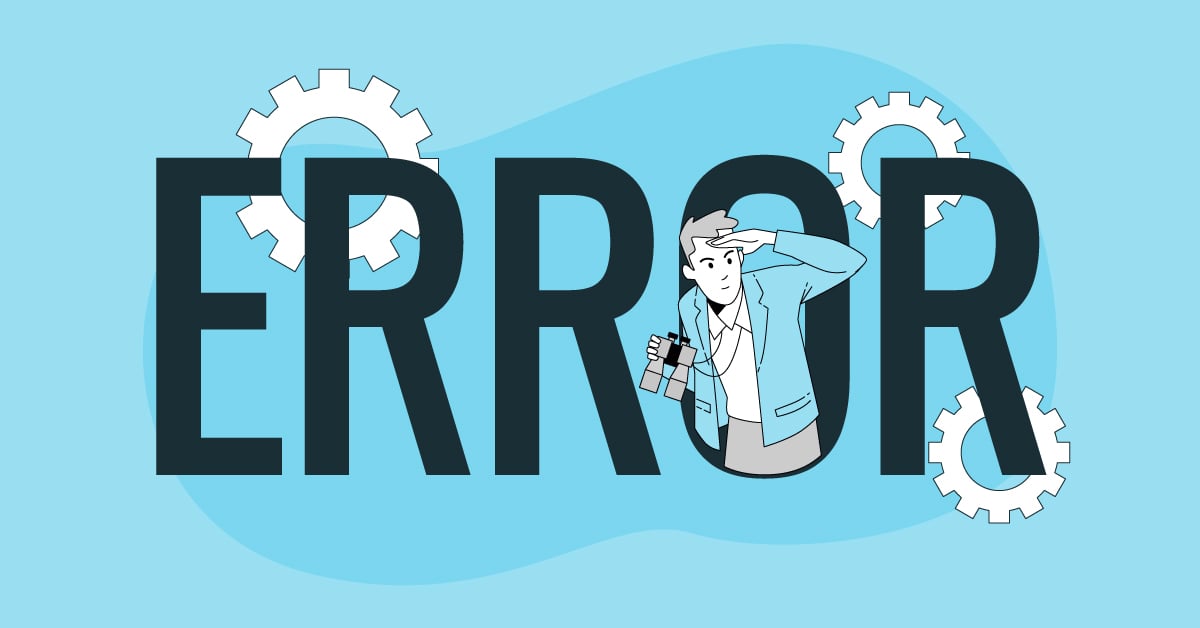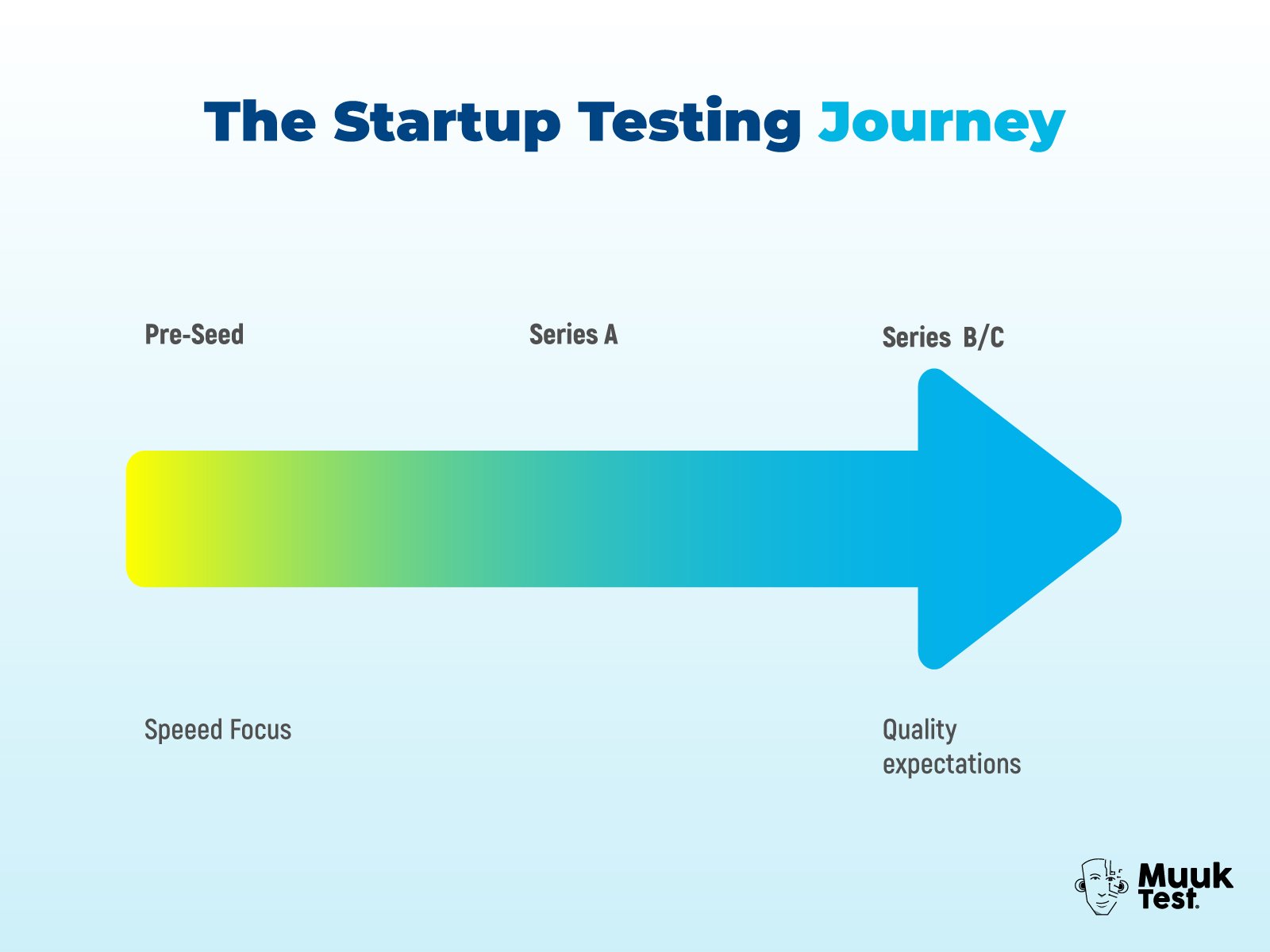- Speed without testing is a trap: Early-stage shortcuts may help you launch faster, but they create expensive rework, frustrated users, and reputation damage later.
- Common founder mistakes: Treating QA as “just testing,” expecting devs to own it all, or assuming automation equals quality leads to hidden risks.
- Good testing drives growth: Beyond bug-finding, testing provides early user feedback, competitive insights, and release confidence, turning quality into a business advantage.
- Invest early, save later: Building QA as a system from the start reduces long-term costs, prevents churn, and protects credibility.

Startups move fast. Startups sprint. Startups have to constantly juggle roadmaps, investors, hiring, and a dozen features. Testing often slides to “later”. Early on, that choice seems harmless, but later, the bill arrives with interest.
I have seen this story. Repeatedly. The pattern is boringly consistent. Teams bet on velocity, shrink on testing, and end up funding rework, reputation repair, and sleepless nights. In this article, we will break the loop. We’ll talk about what usually goes wrong in most early-stage startups and how testing can help build a stronger business.
Why Most Startups Often Overlook Testing
In startup journeys, speed rules the early game. You ship to show traction. You focus on hitting the next milestone fast. This is what happens in the early game:
- The focus is on building velocity and reaching funding milestones.
- Quality and stability often get parked for “later.”
- Founders themselves use the product, report bugs, and make quick fixes.
- The question often is: What do we need to launch?
This approach can work in pre-seed or Series A. But as the company moves into Series B or C, the reality shifts. After product-market fit, the stakes rise, and the following things happen:
- Paying customers arrive with higher expectations and less patience.
- Subtle defects surface in weird corners.
- Teams ship more features, but stop living in the product.
- Testing time shrinks while risk grows.
- Production bugs now have a real cost and impact.
- Reputation compounds, both up and down.
At this stage, the question changes to: What do we need to grow and sustain? Without a solid testing approach, growth often meets the friction of reality.
Common Startup Testing Mistakes Founders Make
When I talk with new founders at conferences, meetups, and VCs, I see these three persistent misconceptions that most of them have in mind about testing and quality. Here, let’s clarify these common misconceptions present in dev-led teams:
Misconception 1: “QA/QE is just testing.”
Reality: Not quite true. QA/QE is the system for how you set quality goals, build to meet them, and check that reality matches intent across the whole product lifecycle.
Testing is just one instrument in that orchestra.
In short: QA/QE = how the team plans, builds, and verifies quality.
Misconception 2: “Devs can own it all.”
Reality: Developers can and should test. They’re excellent at checks near the code. But deep risk hunts, UX nuance, and investigative probing are different muscles.
Anyone can test; not everyone does serious testing well.
In short: Anyone can test to some degree. Serious testing will need specialists.
Misconception 3: “Automation = quality.”
Reality: Automation is fast, faithful, and tireless at what you already know to check. It won’t discover the unknowns by itself. Scripts confirm. Exploration discovers. You need both.
In short: Automation helps. Exploration finds what scripts miss. Exploration is fundamental to good automation.
How Software Testing Helps Startups Grow
Testing is not just about finding bugs. It can also directly contribute to your overall business strength and growth. Here is how good testing can help you with your business goals:
1. Good testing says “yes to problems”
While the majority of the engineering team does not focus much on finding problems. Good testers surface pain with clarity and degree, helping you decide what to fix now vs later. They help you see the degree of a problem and enable prioritization.
2. Good testing performs “competitor analysis”
Testers can help you by studying your competitors and letting you know about key details such as:
- Who are they?
- How do they solve similar problems?
- What challenges do they face?
- Where do they hold an advantage?
- What makes our product unique?
This perspective contributes to building a product that stands out.
3. Good testing is a “competitive edge”
Most startups do not invest in testing seriously. Doing so will help you stand out. Treating quality as a feature becomes a competitive edge as well as an advantage. It will help you shine in your business market. Otherwise you will have to face the impact of poor quality.
4. Good testing gives you “first user feedback”
Testers point out the best and worst parts of a product. They tell you what to polish, what to fix, and what to ship proudly. User feedback is a powerful tool to enhance software quality.
For startups, first impressions matter a lot. Testing helps you to shape that impression.
5. Good testing enables you to “release with confidence”
A product that goes through thoughtful testing builds release confidence. Once you have release confidence, founders can focus more on sales and growth without worrying about hidden quality risks.
On the contrary, poor quality slows growth as well as revenue in the long run.
Startup Testing Challenges (and How to Overcome Them)
Testing in a startup is actually a lot different from how testing happens in a large organization. The pace is high, and the focus areas keep shifting. Let’s understand what the common challenges to testing in startups are:
1. Unplanned releases: Early builds often have bugs, fixes, and new features all bundled together. This gets the teams involved in quick fixes and ad hoc release cycles. This makes regression testing difficult. If this goes on for long, new releases start feeling like a gamble.
2. Excusing responsibility: Testing in startups often gets dismissed with reasons like:
-
-
- “We’re a lean team.”
- “We’ll focus on it later.”
- “We don’t need it right now.”
These excuses can buy short-term speed but create long-term risks.
3. Hurry to release: The faster you push untested changes, the faster you collect avoidable feedback. Time and quality are always connected. Cutting one eventually affects the other.
4. Low budget: Testing often gets dropped when budgets are tight. Developers are asked to cover testing, which they can do to some degree. But professional testers bring a deeper perspective.
The truth is, when you drop testing first, you have to pay for it with support, rework, and credibility. Testing is the practice that reveals truth. Testing helps reduce potential loss.
You won’t always need a big testing team, but you will always need testing. Developers can checks cover happy paths. Testers probe flows, edges, risks. A small, focused setup prevents large, expensive do-overs in the long run.
The Risks of Ignoring Software Testing in Startups
Ignoring testing for too long can invite compounding risks. Testing is not just about technical issues. It can directly affect your business outcomes and leave you with:
- Sloppy UX and broken flows
- Security gaps and inconsistencies
- Bloated support and maintenance costs
- Slow, inconsistent performance
- Unreliable features
- Missed standards and compliance
- Lost user trust and reputation damage
In short, there is no tight feedback loop left between intention and reality. When that gap widens, trust evaporates. This often leads to customers churning out.
Remember: “Bugs are cheap to fix. Reputation isn’t.”
Lessons Learned from Startup Testing Failures
I have seen these patterns play out. Most startups ignore testing, and when they grow, they have to invest heavily in cleaning up the issues that develop due to ignoring testing. From my experience, here are a few practices that can help you with testing in the early stages of your product:
- Create a personalized smoke test for every release. Run it for every release without any excuses.
- Track “Expectation vs Reality” notes for each build. Make a note of new patterns.
- Use end-to-end tests for core flows. Run them in parallel, not just at the end.
- Stabilize one test environment. Protect it from mid-run changes. Seed deterministic data.
- Ask dev teams to use feature flags so risky changes can be switched off fast.
- Centralize test knowledge: Use simple tools such as Confluence/Notion/wiki with links to GitHub issues and examples.
- Publish a one-page release checklist with “acceptance” criteria.
- Budget 10–15% of each sprint for quality work. Treat it as a product, not overhead.
These steps tame chaos. They buy you time, confidence, and a culture that respects reality.
How to Build a QA System in Your Startup
Testing should not be seen as a task at the end. It works best when adopted as a system across the process. Building QA as a system creates a foundation for success. It’s not just about the team, but the process that the team adopts. Here are some tactics to help you develop QA as a system for your startup:
- A bug is anything that threatens customer value. Encourage the team to report bugs. If something is a loss of value to the customer, ask them to raise it as a bug.
- Define “quality” for your context and in measurable terms.
- Perform risk analysis during planning. Discuss what can fail, how often, and at what cost?
- Plan for short test cycles.
- Don’t just check knowns, also explore the unknowns.
- Focus on usability and user experience. Delightful UX reduces support costs.
- Explore unknowns instead of only checking knowns.
- Highlight business risks before they grow bigger.
- Study competitors to develop a sharper product.
- Plan for testing in layers:
- Quick testing: Covers fast sanity checks to catch the obvious.
- Practical testing: Covers main flows, main devices, and main data.
- Deep testing: Covers critical scenarios where failure is expensive.
Also, it’s important to explicitly think about the trade-offs and choices that you want to make:
- Small regret now vs big regret later
- Risk analysis now vs damage control later
- Credibility now vs reputation loss later
- Product enthusiasts now vs public critics later
- Consistent speed now vs slowdown later
- Foundations now vs 10x rework later
Testing can be built into the rhythm of development. It can help you move faster, but with safety. Here is a small and steady plan for quality assurance in startups. It can help you prevent the dev-led testing pitfalls:
- Month 1:
- Draft a release checklist.
- Pick a minimum of three critical flows.
- Build a 10-minute smoke test round.
- Month 2:
- Stabilize a test environment.
- Seed test data.
- Define a minimal always-run E2E path for each release.
- Month 3:
- Run two exploratory sessions with a brief risk charter.
- Risk charter = what to probe, tools to use, risks to target.
- Log findings and ticket the top issues.
However, as you scale, you’ll need a dedicated testing team and system (or end-to-end testing partner) to expand this into a full quality system. Don’t think of it as an additional cost. Think of it as your quality leverage.
Key QA Questions Every Startup Founder Should Ask
Building a startup is a tough and evolutionary journey. Here are some self-reflection questions that you should answer before making decisions about not having a quality assurance system for your startup:
- Do you want first users to become your product fans or loud critics?
- What can hurt you more: slowing slightly for testing, or fixing churns in the long run?
- Do you want to find problems in your private office or read them in public app reviews?
- Will you spend more fixing bugs later or invest in testing now?
Testing isn’t a luxury or a blocker. It’s your regret reducer, credibility keeper, and growth safety net. Start early. Scale deliberately. Sleep better. The startups that understand this early can grow stronger. The ones that don’t often end up cleaning up a much bigger mess later.
Happy testing!

Frequently Asked Questions
Why do startups overlook software testing?
Founders focus on speed and funding milestones, pushing QA aside. This works short-term, but leads to costly bugs later. Starting small with smoke tests or lightweight QA prevents these risks.
What are the biggest QA mistakes founders make?
Common mistakes include treating QA as merely bug-finding, relying solely on developers, or assuming that automation equates to quality. True QA is a system that ensures long-term stability and user trust.
How does testing help startups grow?
Testing builds release confidence, improves user experience, and uncovers competitor insights. For startups, it turns quality into a competitive advantage that accelerates growth.
How can a startup begin QA without hiring a full team?
Early-stage startups can start with smoke tests, end-to-end flows, and exploratory checks. Services like MuukTest provide expert-led QA coverage, allowing founders to scale quality without building a large in-house team.
What happens if testing is delayed?
Delaying QA compounds risks: sloppy UX, security gaps, high support costs, and lost user trust. Fixing these issues later is slower and more expensive than addressing them early.




%20(1).png?width=150&height=69&name=MuukTest-logo---light-background%20(3)%20(1).png)


.png?width=700&height=700&name=Untitled%20design%20(32).png)
